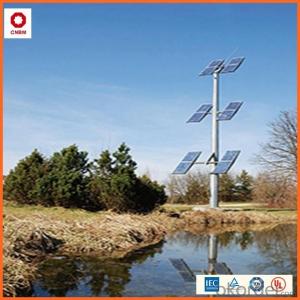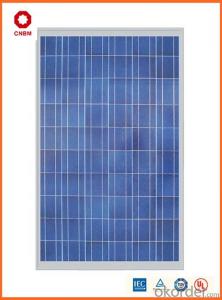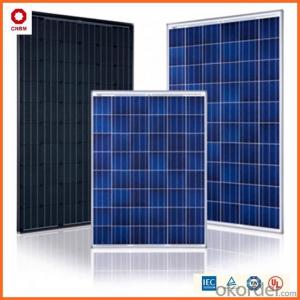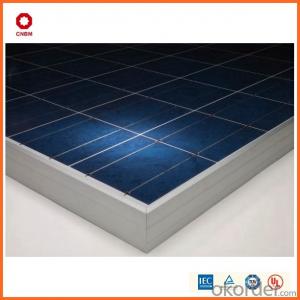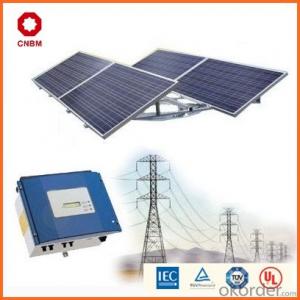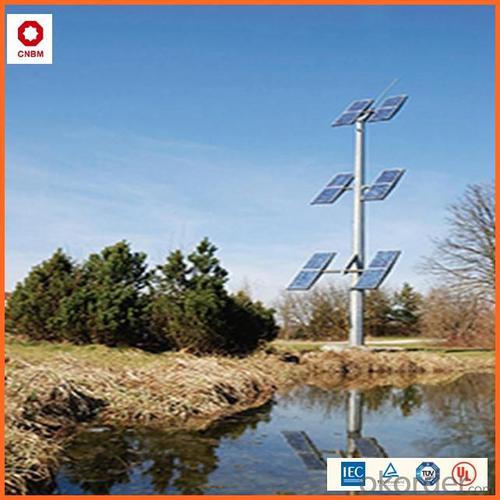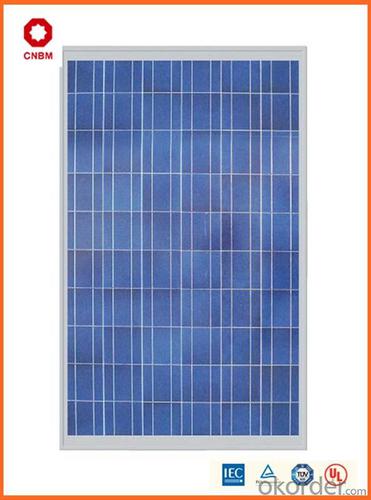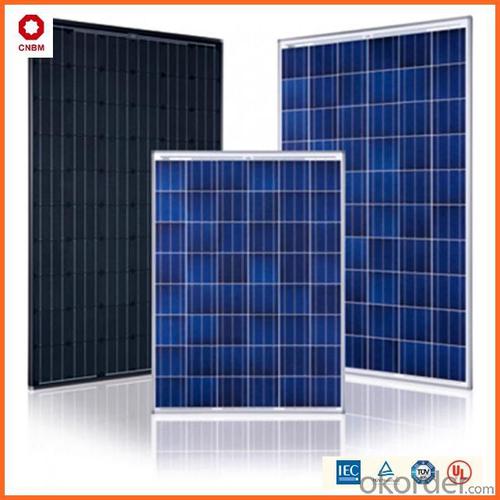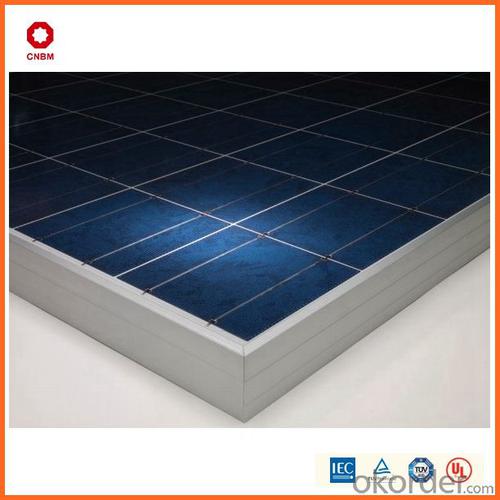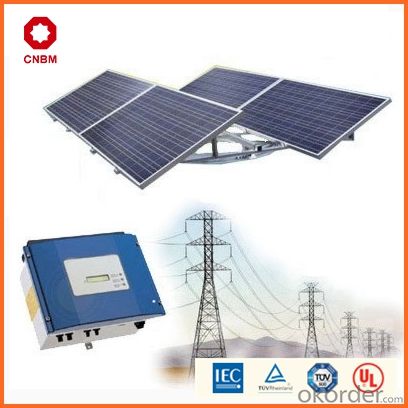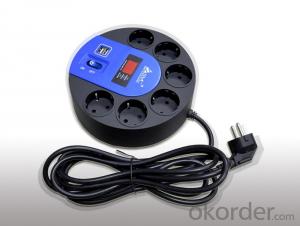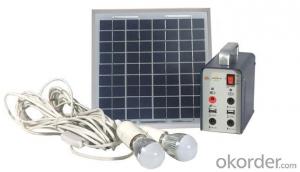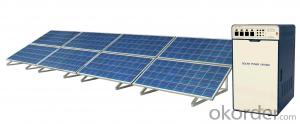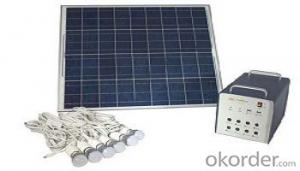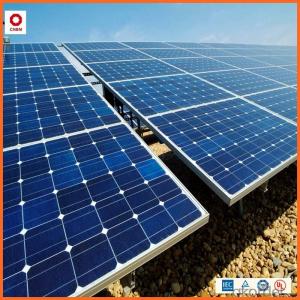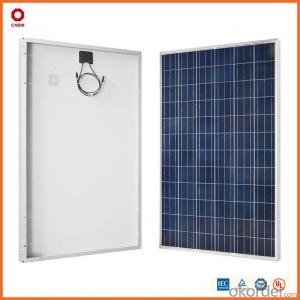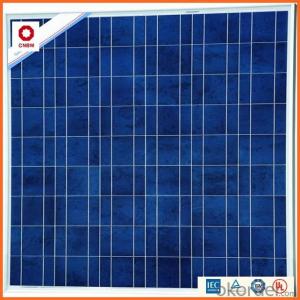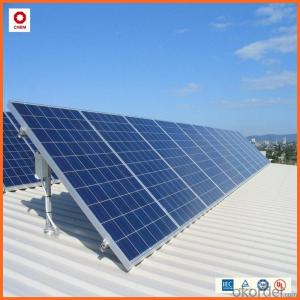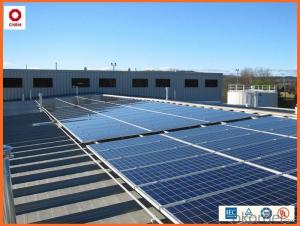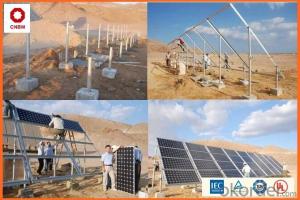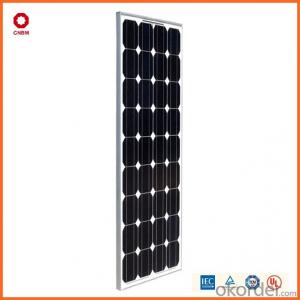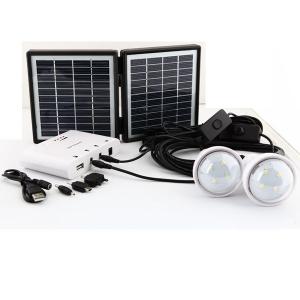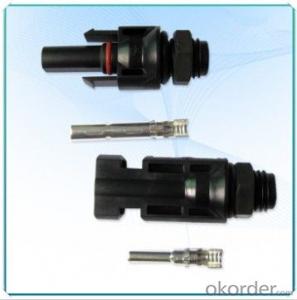Ecs Solar Energy Systems - 25w Small Solar Panels in Stock China Manufacturer
- Loading Port:
- China main port
- Payment Terms:
- TT OR LC
- Min Order Qty:
- 10 watt
- Supply Capability:
- 10000000 watt/month
OKorder Service Pledge
OKorder Financial Service
You Might Also Like
Specification
Product Description:
Hot Sale !!! Quality and Safety of Small Poly Solar Panel 5w~150w
1. Rigorous quality control meets the highest international standards.
2. High-transmissivity low-iron tempered glass, strong aluminium frame.
3. Using UV-resistant silicon.
4. IS09001/14001/CE/TUV/UL
Warranties of Small Poly Solar Panel 35~85w
1. 10 years limited product warranty
2. 15 years at 90% of the minimal rated power output
3. 25 years at 80% of the minimal rated power output
Specification
Characteristics of Poly solar panels CNBM (245-320W) | |||||
Max Power Voltage Vmp(V) | 30.3 | 30.8 | 31.1 | 31.4 | 31.85 |
Max Power Current Imp(A) | 7.60 | 7.64 | 7.73 | 7.81 | 7.85 |
Open Circuit Voltage Voc(V) | 36.1 | 36.6 | 37 | 37.3 | 37.68 |
Short Circuit Current Isc(A) | 8.50 | 8.55 | 8.65 | 8.75 | 8.85 |
Max Power Pm(W) | 230W | 235W | 240W | 245W | 250W |
Temperature Coefficient of Cells Poly solar panels CNBM (245-320W) | |
NOCT | 45± 2 |
Temperature Coeffucients of Isc | 0.0492 |
Temperature Coeffucients of Voc | -0.3374 |
Temperature Coeffucients of Voc | -0.4677 |
Mechanical Data of Poly solar panels CNBM (245-320W) | |
Dimension | 1638 × 982 × 40 mm |
Weight | 19.5 kg |
No. of Cells and Connections | 60 (6 ×10) |
Tolerance | 0 ~ + 5 W |
Cell | Monocrystalline Cell 156 × 156 mm |
Packing | 624 Pcs/40ft(H) Container |
Limits of Poly solar panels CNBM (245-320W) | |
Operating Temperature | -40 to +85 |
Storage Temperature | -40 to +85 |
Max System Voltage | 1000VDC(IEC) / 600VDC(UL) |
Features of our products:
• High conversion efficiency mono/poly-crystalline amorphous silicon solar cells
• Modules incorporate high performance bypass diodes to minimize the power drop caused by shading
• High transmittance, low-iron tempered glass
• High performance EVA encapsulant to prevent destroying and water.
• AI frame: without screw, corner connection. 8 holes on the frame can be installed easily
• Good performance of preventing from atrocious weather such as wind and hails
• Certifications: CE IEC TUV VDE UL, Class I
• 10 years 90% power output warranty
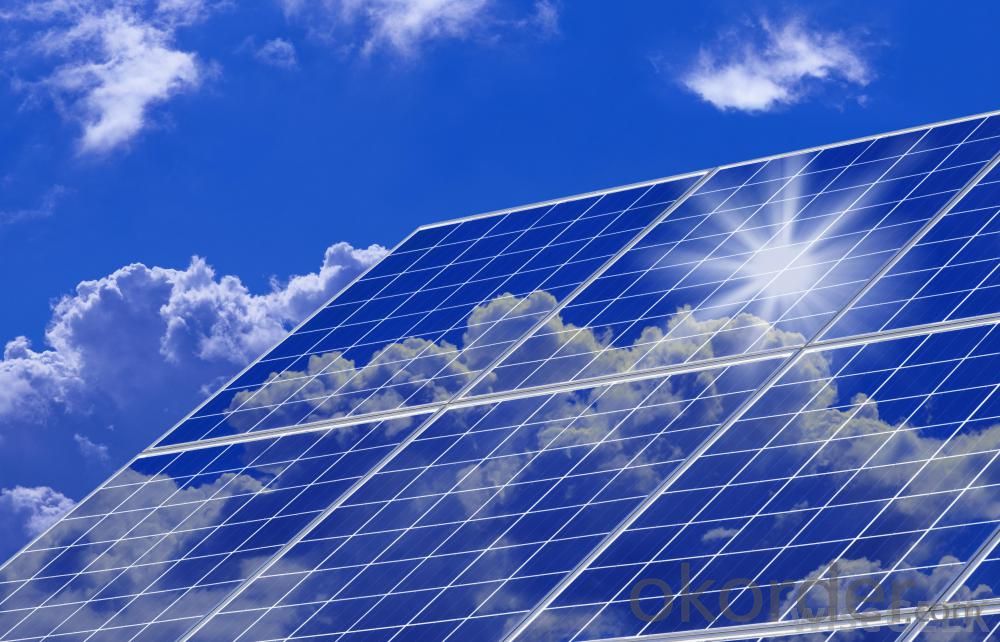
Shipping of Small Poly Solar Panel 35~85w
By Sea | Delivery from Shanghai or Ningbo seaport |
By Air | Departure from Shanghai Pudong Airport |
By Express | Post by DHL, EMS, UPS, TNT. |
Features of our products:
• High conversion efficiency mono/poly-crystalline amorphous silicon solar cells
• Modules incorporate high performance bypass diodes to minimize the power drop caused by shading
• High transmittance, low-iron tempered glass
• High performance EVA encapsulant to prevent destroying and water.
• AI frame: without screw, corner connection. 8 holes on the frame can be installed easily
• Good performance of preventing from atrocious weather such as wind and hails
• Certifications: CE IEC TUV VDE UL, Class I
• 10 years 90% power output warranty
As a professional Solar Panel manufacturer and Supplier in China, we have our customers come around the whole world and our specialization has got a worldwide recognition. Meanwhile, with our superior quality, competitive price, prompt and excellent service, As main role in trade section of CNBM Group, CNBM International Corporation supplies products including Monocrystalline Solar Panel, Polycrystalline Solar Panel ( multicrystalline silicon Solar Panel) have received and enjoyed famous reputation in many countries and regions in the world.
- Q: Can solar energy systems be used for powering electric plane systems?
- Solar energy systems have the ability to power electric plane systems. The concept of using solar power for aviation has gained considerable attention in recent years. In order to capture sunlight and convert it into electricity, solar panels can be installed on the wings and fuselage of an aircraft. This electricity can then be utilized to power various systems on the plane, including navigation, communication, lighting, and auxiliary power units. While it is currently not practical to solely rely on solar power for the main propulsion of a commercial plane due to the limited energy density of solar panels, solar energy can still play a valuable role in reducing overall energy consumption in aircraft. By utilizing solar power for auxiliary systems, electric planes can significantly decrease their dependence on traditional fossil fuel-based power sources. Experimental and small-scale projects have already shown promising results in solar-powered electric planes. For example, Solar Impulse 2, a solar-powered aircraft, successfully completed a round-the-world journey in 2016, highlighting the potential of solar energy in aviation. NASA is also actively exploring the application of solar energy in their electric aircraft research. However, there are still obstacles to overcome in order to fully integrate solar energy systems into commercial aviation. The efficiency and weight of solar panels need to be enhanced to generate sufficient power for larger aircraft. Additionally, advanced energy storage technologies must be developed to store excess solar energy for use during low-sunlight conditions or nighttime flights. Despite these challenges, the potential advantages of utilizing solar energy in aviation are significant. Solar-powered electric planes have the capability to reduce carbon emissions and decrease reliance on fossil fuels, ultimately leading to a more sustainable and environmentally friendly aviation industry. As technology continues to advance, the integration of solar energy systems into electric plane systems will likely become more feasible and widespread.
- Q: Can solar energy systems be used for powering off-grid eco-sanctuaries?
- Yes, solar energy systems can definitely be used for powering off-grid eco-sanctuaries. Solar panels can capture sunlight and convert it into electricity, which can then be stored in batteries for use during times when sunlight is not available. This reliable and renewable source of energy is perfect for eco-sanctuaries, as it aligns with their commitment to sustainability and reducing their environmental impact. Additionally, off-grid locations often lack access to traditional power sources, making solar energy an ideal solution for providing electricity in remote areas.
- Q: Can solar energy systems work during cloudy or rainy days?
- Solar energy systems can still work during cloudy or rainy days, although their efficiency may be reduced. While direct sunlight is the most effective way to generate solar energy, even diffused sunlight on cloudy or rainy days can still produce a certain amount of electricity.
- Q: Can solar energy systems be used for powering shopping malls?
- Certainly, shopping malls can indeed utilize solar energy systems to power their operations. The sun's energy can be captured by installing solar panels on the rooftops or parking lots of shopping malls. This captured energy can then be converted into electricity, which can be used to power various functions within the mall, such as lighting, heating and cooling systems, escalators, elevators, and other electrical appliances. By embracing solar energy, shopping malls can greatly reduce their reliance on conventional energy sources and decrease their carbon emissions. Moreover, solar energy systems can contribute to long-term electricity cost savings for malls, as they produce clean and renewable energy. All in all, solar energy systems offer a feasible and sustainable solution for meeting the power needs of shopping malls.
- Q: Can solar energy systems be used for powering mining or drilling operations?
- Indeed, solar energy systems have the capability to power mining or drilling operations. Given that these activities often occur in remote areas with limited access to grid electricity, solar power presents a practical and sustainable solution. On-site installation of solar energy systems can generate electricity to meet the needs of various mining and drilling operations, such as machinery, equipment, lighting, ventilation systems, and other power-intensive processes. Solar energy systems comprise solar panels that convert sunlight into electricity, which is then stored in batteries for use when sunlight is not available. This arrangement ensures a consistent and reliable power supply for mining and drilling activities, thereby reducing reliance on conventional fossil fuel generators or expensive grid connections. Moreover, solar energy systems offer numerous advantages for mining and drilling operations. They are environmentally friendly, as they do not emit greenhouse gases, thus lessening the carbon footprint associated with these energy-intensive processes. Additionally, solar power is a renewable energy source, guaranteeing a sustainable power supply for the long term. Although the initial investment in setting up solar energy systems may be higher compared to traditional energy sources, the long-term cost savings and benefits outweigh the initial expenses. Solar energy systems require minimal maintenance and have a lengthy lifespan, resulting in significant cost reductions over time. Furthermore, governments and organizations often provide incentives and subsidies to promote the adoption of renewable energy, further alleviating financial burdens. In conclusion, solar energy systems are a practical and efficient solution for powering mining and drilling operations in remote areas. They provide a sustainable, reliable, and cost-effective alternative to conventional energy sources, contributing to the reduction of environmental impact while ensuring a continuous power supply for these energy-intensive processes.
- Q: Can solar energy be used for hot water?
- Yes, solar energy can be used for heating water through the use of solar thermal systems. These systems typically consist of solar panels that absorb sunlight and convert it into heat, which is then used to heat water for various applications such as domestic hot water or space heating.
- Q: Can solar energy systems be used in areas with high seismic activity?
- Yes, solar energy systems can be used in areas with high seismic activity. However, it is essential to design and install these systems with seismic-resistant features in mind to ensure their structural integrity during earthquakes. Reinforcing the mounting structures, using flexible connectors, and implementing proper anchoring techniques can help mitigate potential risks. Additionally, regular inspections and maintenance are crucial to ensure the ongoing safety and functionality of solar energy systems in seismic-prone regions.
- Q: How do solar energy systems impact the insurance coverage of a home?
- The insurance coverage of a home can be influenced by solar energy systems, both positively and negatively. One benefit is that the installation of solar panels can enhance a home's value, potentially resulting in higher costs for replacement if there is damage or loss. Consequently, insurance coverage limits may need to be increased to ensure sufficient protection. Furthermore, certain insurance companies offer homeowners who install solar energy systems discounts or incentives. These reductions can help offset insurance premiums, making it more affordable for homeowners to safeguard their homes. Nevertheless, negative impacts should also be taken into account. Solar panels can be susceptible to damage caused by natural disasters like storms, hail, or fire. The coverage for such damages may differ depending on the insurance policy. Some policies may include coverage for solar panels as part of the overall home structure, while others may necessitate an additional endorsement or separate policy. Liability coverage is another consideration. If a solar energy system causes harm to neighboring properties or individuals, homeowners must ensure they have sufficient liability coverage to protect against potential lawsuits. To ensure appropriate coverage and understand any potential changes or requirements that may affect insurance premiums or coverage limits, homeowners should review their insurance policies and consult with their insurance providers before installing solar energy systems.
- Q: Can a solar energy system be installed in areas with high seismic activity?
- Yes, a solar energy system can be installed in areas with high seismic activity. However, it is crucial to ensure that the system is designed and installed to withstand the potential impacts of seismic events. Several measures can be taken to enhance the system's resilience, such as: 1. Reinforced Mounting Structures: Solar panels are typically mounted on structures, such as rooftops or ground-mounted frames. These structures should be designed to withstand seismic forces, including the possibility of ground shaking. Reinforced materials and additional bracing can be used to make the mounting structures more robust. 2. Flexible Wiring and Connectors: Solar panels are connected through wiring, and special consideration should be given to the installation of flexible wiring and connectors. This allows for some movement during seismic events, reducing the risk of damage or disconnection. 3. Secure Panel Installation: Solar panels should be securely fastened to the mounting structures to prevent them from dislodging during an earthquake. Additional measures, such as using specialized clamps or adhesives, can be taken to enhance the panel's stability. 4. Proper Grounding: Ensuring proper grounding of the system is essential to protect against electrical surges and potential damage caused by seismic events. It is important to follow local electrical codes and guidelines to ensure the system is safely grounded. 5. Regular Inspections and Maintenance: Regular inspections should be conducted to identify any potential issues or damage to the solar energy system. Prompt maintenance and repairs can help mitigate any risks associated with seismic activity. By following these guidelines and working with experienced professionals, a solar energy system can be successfully installed and operated in areas with high seismic activity.
- Q: How does the size of a solar energy system affect its cost?
- The size of a solar energy system directly affects its cost. Generally, the larger the system, the higher the cost. The cost of a solar energy system is determined by multiple factors, including the number of solar panels, the type and quality of the panels, the inverter capacity, the mounting equipment, and the installation labor. One key component in determining the cost is the number of solar panels. Solar panels are the primary source of energy generation in a solar system. The more panels installed, the greater the energy output of the system. However, each additional panel adds to the overall cost, including the cost of the panel itself, as well as additional wiring, mounting hardware, and installation labor. Another factor to consider is the type and quality of the solar panels. Different panels have varying efficiencies, durability, and warranties. Higher-quality panels with better efficiency tend to be more expensive. However, they often come with longer warranties and may generate more electricity over their lifetime, resulting in higher overall savings. Inverter capacity is also an important factor affecting the cost. Inverters convert the direct current (DC) produced by the solar panels into alternating current (AC) that can be used to power household appliances. Larger solar systems usually require larger inverters to handle the increased energy production. Higher capacity inverters come at a higher cost, contributing to the overall system cost. Mounting equipment and installation labor costs are additional considerations. Larger systems may require more mounting equipment, such as racks and brackets, to securely hold the solar panels. Additionally, the installation labor cost increases with the size of the system, as more time and effort are required to install a larger number of panels. It is important to note that while the upfront cost of a larger solar energy system may be higher, it can also provide greater long-term savings through reduced electricity bills. A larger system will generate more electricity, potentially offsetting a greater portion of your energy needs and reducing your reliance on grid electricity. Overall, the size of a solar energy system has a direct impact on its cost. The number of panels, type and quality of panels, inverter capacity, mounting equipment, and installation labor all contribute to the total cost of the system. It is essential to carefully consider your energy needs and budget when determining the appropriate size of a solar energy system for your specific requirements.
Send your message to us
Ecs Solar Energy Systems - 25w Small Solar Panels in Stock China Manufacturer
- Loading Port:
- China main port
- Payment Terms:
- TT OR LC
- Min Order Qty:
- 10 watt
- Supply Capability:
- 10000000 watt/month
OKorder Service Pledge
OKorder Financial Service
Similar products
Hot products
Hot Searches
Related keywords
